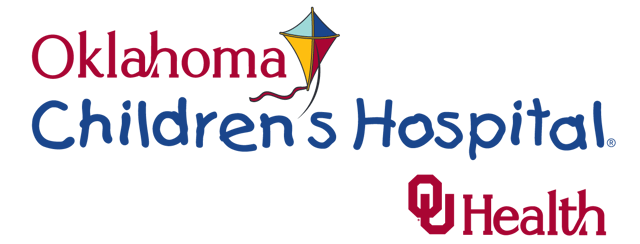Tips for Parents
Any hospital stay for your child can create a high level of stress for you and your family. Use the following tips and guidelines to help you cope with whatever comes your way.
While at Oklahoma Children's Hospital
Anytime you’re at Oklahoma Children's Hospital OU Health, remember that you’re not alone, no matter what you face. As a parent whose child needs hospitalization, you can meet other people with children in similar situations when you visit The Zone, a relaxation area, play haven and learning space inside the hospital, or the Ronald McDonald Family Room that can offer you a quiet spot to gather your thoughts or share a conversation with others.
While at the hospital, you also want to:
- Try to stay calm – Even if you feel scared or concerned about the situation, try to stay calm around your child because they sense your energy. You don’t need to keep things bottled up. Just remember to take time to talk about your concerns with another adult, including our Child Life specialists.
- Ask questions – When you find something you don’t understand or if you need more information, ask anyone in the hospital. Everyone at Oklahoma Children’s Hospital wants to help you and your family. Take time to find the information that will help you understand what’s happening, so you can feel more confident and relaxed.
- Write down your questions – Emotions can run high as you get to the hospital and you may not remember everything you wanted to ask. Before coming to the hospital, make a list of your questions so you don’t feel like you missed anything.
- Bring along things to do for both yourself and your child – Because waiting periods may sometimes last longer than expected, you want to prepare yourself and your child by bringing along distractions to occupy the time. For your child, pack items to keep them busy such as toys, games, books to read or color, portable movie players with earbuds or anything else you know they enjoy. For yourself, bring books, magazines, work projects or activities you can handle on a laptop or tablet.
Ways to Address Common Fears
Children typically feel fearful about a hospital visit. Talk with your child about these common fears before their hospital stay to help them face their concerns in a positive way.
- Swallowing pills – Before a hospitalization, many people have never needed to swallow pills. Although this activity can create anxiety, once you get to Oklahoma Children’s Hospital, our Child Life specialists will help your child practice swallowing pills.
- Wearing hospital pajamas – Although it may seem strange, many people don’t want to wear hospital pajamas because it can feel upsetting to relinquish an element of control. Your child may wear their own pajamas most of the time during their stay, but they must wear hospital pajamas for their procedure.
- Seeing white coats and masks – Medical clothing and equipment can seem quite scary for children. Remind your child that members of their medical team are still the same nice people they already know, even when wearing special coats, hats and masks.
- Waking up in surgery – Unfortunately, many children have seen movies where a patient wakes up during surgery, which leaves them with the scary feeling that the same thing might happen to them. Reassure them that it won’t happen and that they won’t wake up until after surgery.
- Putting on the anesthesia mask – No matter what your age, the thought of putting on and breathing air through a mask can feel challenging. That’s especially true for children. Be sure to emphasize with your child that wearing the mask helps them stay asleep during surgery. Once you get to the hospital, your Child Life specialist can help reduce your child’s fear about wearing the anesthesia mask by showing it to them and letting them play with it.
When Preparing My Child for Surgery
Talk to your child ahead of time to prepare them for the hospital visit and help them cope with the situation in the best way possible.
Get the conversation started by reading through the special eBook created by Oklahoma Children’s Hospital – It’s Your Visit – and narrated by Chipper, a cartoon-like character your child can enjoy.
You also may want to schedule an appointment with our Child Life specialists who can help your child and family learn more about Oklahoma Children’s Hospital and possibly take a tour before the procedure.
Consider purchasing a toy medical kit, which can help your child become more comfortable around some of the medical equipment they will encounter while in the hospital.
Day of Surgery
While each child faces a unique situation, the following guidelines can help you understand what to expect and what’s expected of you the day of surgery.
- Dress your child in comfortable clothing and bring along other comfortable clothing for them to use after the procedure. Think about clothing that will accommodate any surgical dressings or devices your child will have after surgery.
- Bring your verification of insurance card and a form of identification (ID).
- If you are not the birth parents or adoptive parents, you must provide written Verification of Guardianship to sign the required consent for surgery form.
- If your child is in DHS custody, a judge must sign your surgery consent form. Ask your DHS case worker to set up this process.
- Your child will require your full attention on the day of surgery, so please don’t bring other children with you that day. Make arrangements in advance for someone else to provide childcare.
- Only you, as parents/caregivers, and your child can remain in the Outpatient Waiting Area. All other family members are welcome to wait in the Surgery Waiting Area.
- Because people undergoing surgery must not eat or drink before surgery, we ask that you do not bring food or drink into the outpatient area. You may eat or drink in the Surgery Waiting Area across from Outpatient Registration.
After Surgery
Remember that it may take 30-45 minutes after surgery before your child moves to the Recovery Room.
- Your physician or the resident physician will update you on the outcome of surgery.
- When your child has stabilized in the Recovery Room, the nurse will allow one or two family members to stay at the bedside.
- The recovery process takes about 45-60 minutes.
- After recovery, your child will move to an outpatient room or, if needed, an inpatient room in the hospital.
- If your child is admitted to the hospital, at least one caregiver may stay the night in your child’s room. Hospital visiting hours for other family members are flexible but can vary depending on your child’s condition.
- Before your child leaves the hospital, your nursing staff will provide instructions about diet, rest, medications and return appointments.
Learn more about preparing your child for surgery and surgery services for children at Oklahoma Children's Hospital OU Health.



